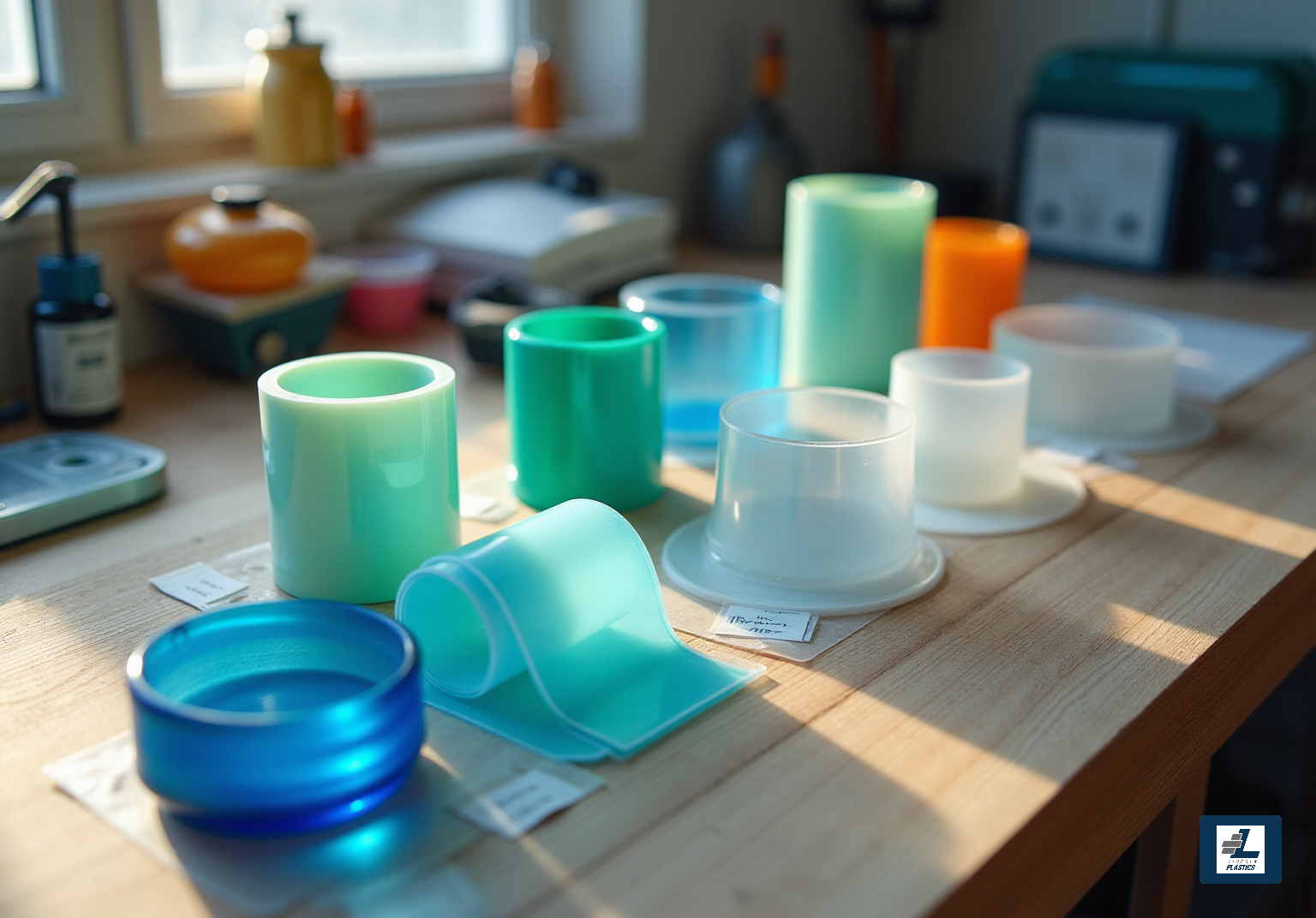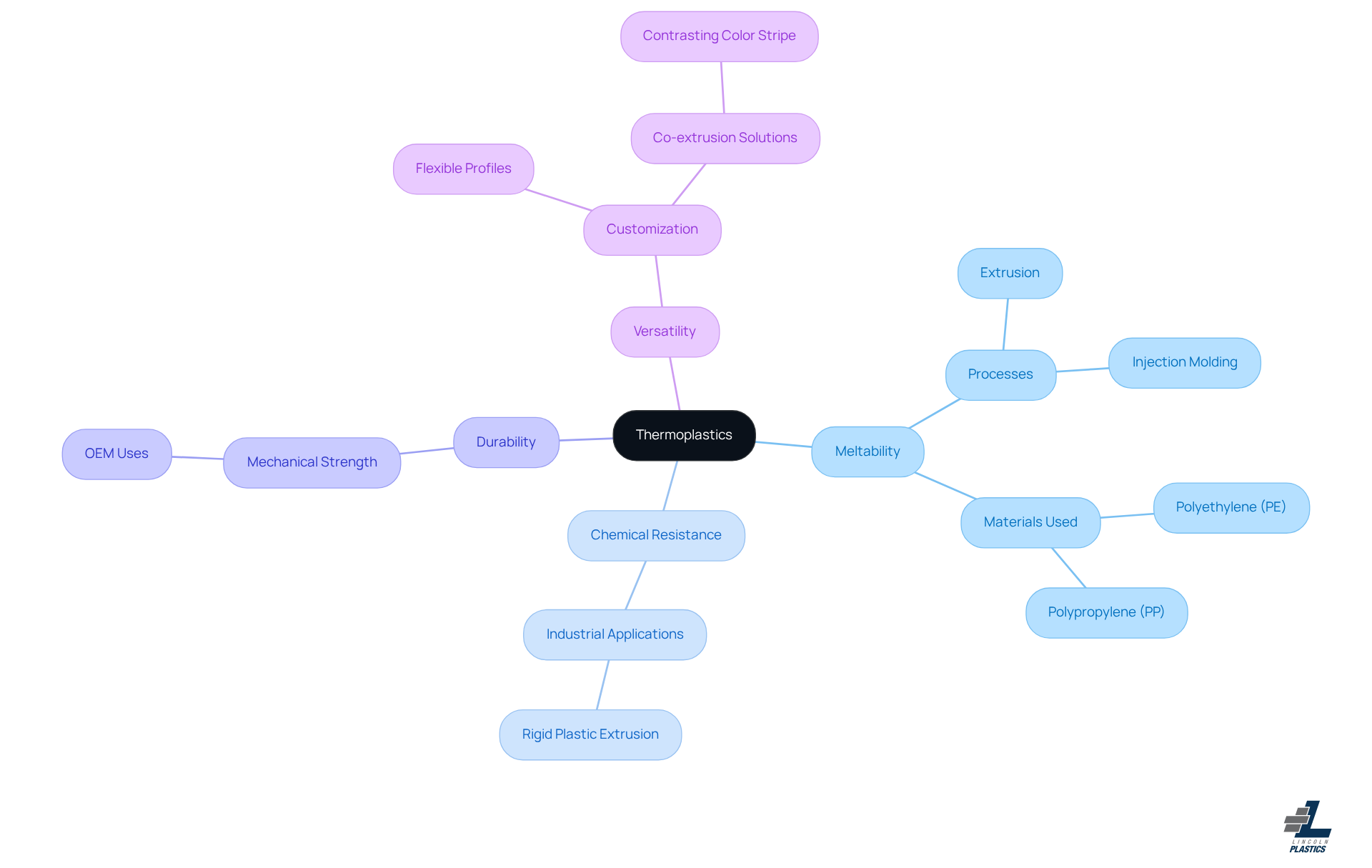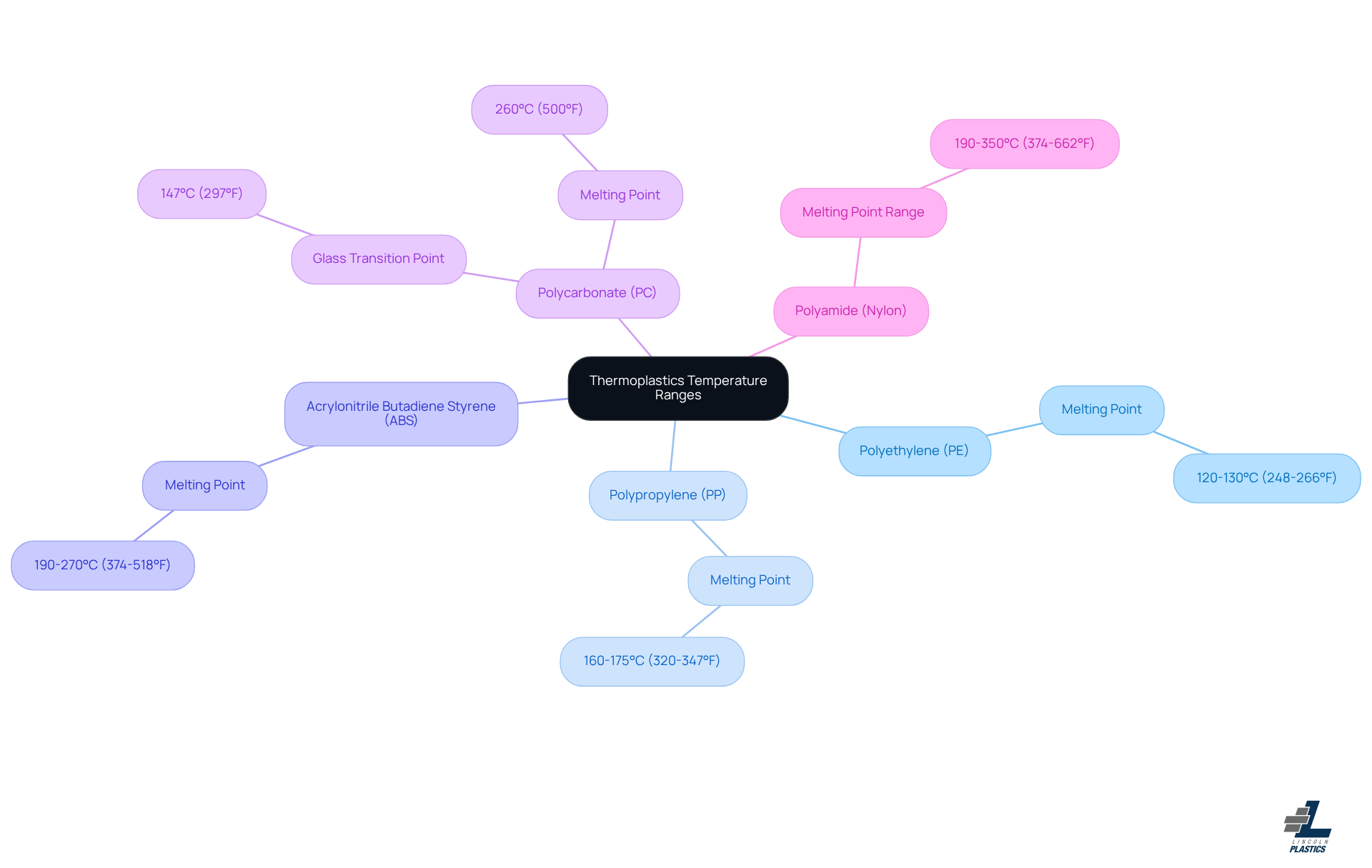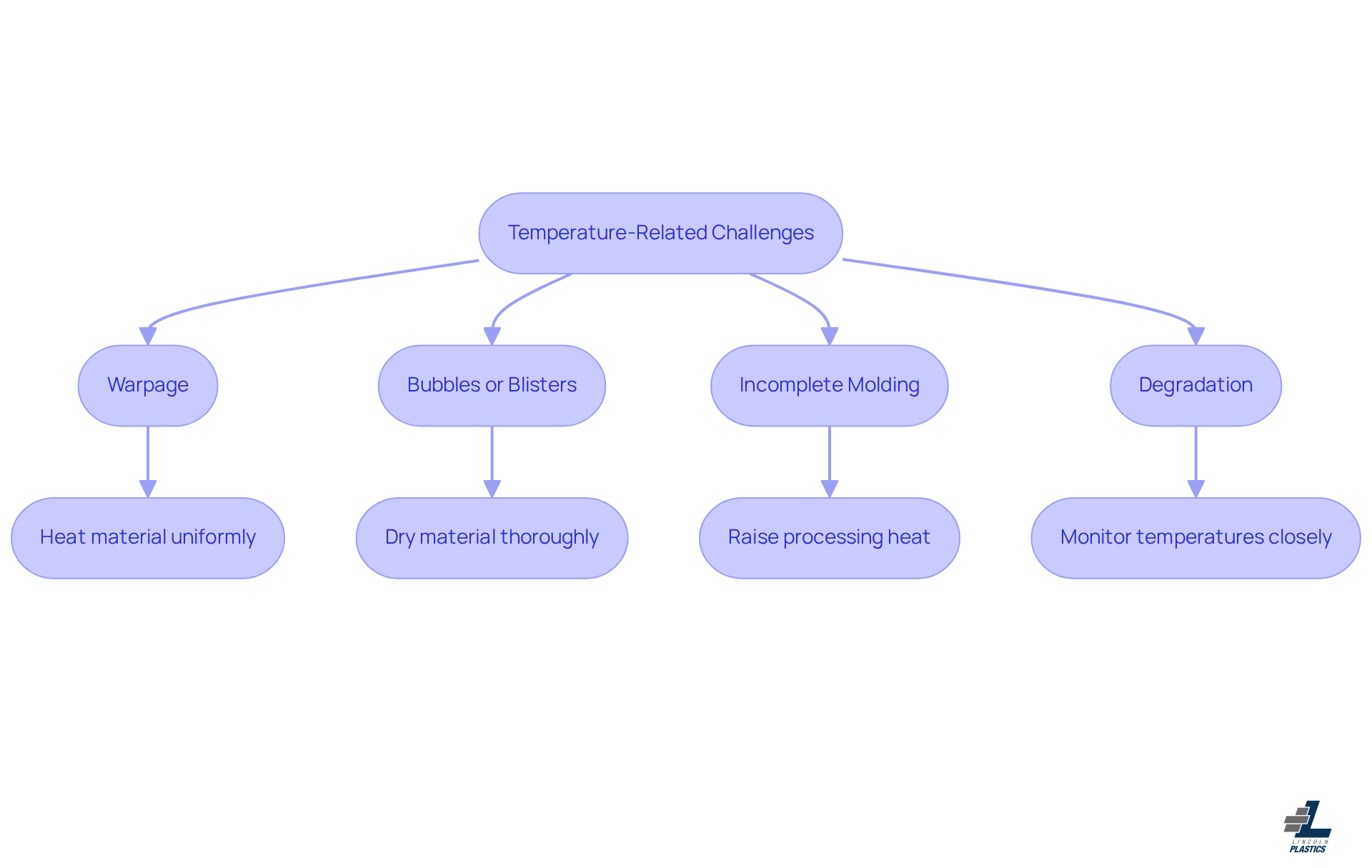
Master Thermoplastic Temperature Ranges for Optimal Applications
Overview
Have you ever found yourself puzzled over which thermoplastic to use for your latest project? You're not alone! This article dives into understanding the best temperature ranges for various thermoplastics, ensuring you can apply them effectively in your work.
We’ll break down the temperature ranges for common thermoplastics and highlight why it’s crucial to choose the right material. Think about it: selecting based on temperature resistance, mechanical properties, and processing methods can really make a difference. This guide is here to help you make informed choices tailored to your specific needs.
So, let’s explore this together! You might be wondering how these factors come into play—don’t worry, we’ve got you covered. By the end, you’ll feel equipped to tackle your thermoplastic challenges with confidence.
Introduction
If you're diving into the world of manufacturing or product design, getting to know thermoplastics is a must. These materials are pretty amazing—they can be reshaped over and over with just a bit of heat! They find their way into all sorts of industries, but picking the right thermoplastic isn’t just about knowing what they are. It’s also about understanding the specific temperature ranges that really affect how they perform.
So, what happens if the material you choose doesn’t match the conditions it’s going to face? That’s a big question! In this guide, we’ll explore the critical temperature parameters for common thermoplastics. You’ll get some handy insights on how to choose the best material for your needs, while also tackling any temperature-related challenges that might pop up.
Define Thermoplastics and Their Properties
Have you ever wondered what makes thermoplastics so special? Well, let’s dive into it! Thermoplastics are a unique class of polymers that become pliable or moldable when heated and solidify as they cool down. This reversible process means they can be reshaped multiple times without losing their quality. Pretty neat, right?
Now, let’s talk about some key properties of thermoplastics:
- Meltability: They can be melted and reformed, which is perfect for processes like extrusion and injection molding. At Lincoln Plastics, we take advantage of this to create both standard and custom round plastic profiles using materials like Polyethylene (PE) and Polypropylene (PP). This flexibility in design and usage is a game-changer!
- Chemical Resistance: Many types of plastics resist chemicals, making them suitable for various industrial applications. This is especially important for those needing reliable rigid plastic extrusion solutions.
- Durability: They boast good mechanical strength and can handle a lot of stress, which is crucial for OEM uses.
- Versatility: Thermoplastics can be tailored to meet specific needs, whether it’s flexibility, rigidity, or impact resistance. For instance, our custom flexible profiles and co-extrusion solutions, like adding a contrasting color stripe, showcase this versatility beautifully.
Understanding these characteristics is key when selecting the right polymer that fits within the thermoplastic temperature range for your needs. And remember, Lincoln Plastics is here to provide customized solutions that fit your specific requirements!

Identify Temperature Ranges for Common Thermoplastics
When it comes to plastics, did you know that different types have their own unique thermoplastic temperature range? This is super important because it helps you figure out which plastic is best for your needs. Let’s dive into some common thermoplastics and their temperature ranges:
- Polyethylene (PE): Melting point is around 120-130°C (248-266°F).
- Polypropylene (PP): Melting point is approximately 160-175°C (320-347°F).
- Acrylonitrile Butadiene Styrene (ABS): Melting point falls between 190-270°C (374-518°F).
- Polycarbonate (PC): Glass transition point is around 147°C (297°F), with a melting point of about 260°C (500°F).
- Polyamide (Nylon): Melting point varies from 190-350°C (374-662°F) depending on the specific type.
Understanding the thermoplastic temperature range is crucial for selecting the appropriate polymer for your project. You want to ensure that the material can handle the conditions it will face, right? So, next time you’re selecting a plastic, keep these temperatures in mind to make sure it performs just as you need it to!

Select Appropriate Thermoplastics for Your Application Needs
When you're picking a thermoplastic for your project, there are a few things you should think about:
- Temperature Resistance: First off, make sure the plastic can handle the temperatures it’ll face in your application.
- Mechanical Properties: Next, consider what kind of strength, flexibility, and impact resistance you need.
- Chemical Compatibility: You’ll also want to check if the plastic will come into contact with any substances that might damage it.
- Processing Method: Think about how you’ll process the plastic—like extrusion or injection molding—and choose one that works well with that method.
- Cost and Availability: Finally, don’t forget to factor in your budget and how easy it is to get the materials.
For instance, if you’re looking for materials that can handle high temperatures within the thermoplastic temperature range, Polycarbonate or Nylon might be your best bet. On the other hand, if flexibility is key, you might want to go with Polypropylene. By aligning the plastic material with your specific needs, you’ll boost both performance and durability.
So, what do you think? Ready to dive into the world of thermoplastics?

Troubleshoot Temperature-Related Challenges in Thermoplastic Use
Temperature-related challenges can significantly affect the performance of heat-sensitive plastics when operating within their thermoplastic temperature range. Let’s dive into some common issues and how you can tackle them:
- Warpage: This pesky problem often pops up due to uneven heating. What can you do? Make sure to heat the material uniformly and maybe tweak that heating duration a bit.
- Bubbles or Blisters: If you notice these little guys, it might be because there's moisture lurking in your thermoplastic. The fix? Just dry that material thoroughly before you start processing.
- Incomplete Molding: This one can happen if your heat is running too low. To solve it, simply raise the processing heat to ensure the mold gets filled just right.
- Degradation: Too much heat can lead to thermal degradation of your material. Keep an eye on those temperatures and steer clear of going over the recommended limits.
By staying aware of these challenges and implementing these solutions, you can truly optimize the performance of thermoplastics while considering the thermoplastic temperature range in your projects. So, what do you think? Ready to give it a try?

Conclusion
Understanding the ins and outs of thermoplastics and their temperature ranges is super important for getting the most out of them in different applications. These materials are quite versatile, offering cool properties like meltability, chemical resistance, and durability, making them perfect for a variety of industrial uses. Knowing how to pick the right thermoplastic based on its temperature characteristics can really boost performance and longevity in your projects.
Now, let’s highlight some key points. We’ve looked at specific temperature ranges for common thermoplastics like Polyethylene, Polypropylene, and Nylon. Plus, we’ve emphasized factors like mechanical properties, chemical compatibility, and processing methods as crucial when choosing the right material. Being aware of potential temperature-related challenges, like warpage and degradation, along with some practical troubleshooting tips, really empowers you to make informed decisions.
In conclusion, mastering thermoplastic temperature ranges is super significant. By aligning your material selection with application needs and understanding the thermal properties involved, you can ensure optimal performance and durability. Embracing these insights will not only lead to successful project outcomes but also spark innovation in the use of thermoplastics across various industries. So, go ahead and dive into these details—you’ve got this!
Frequently Asked Questions
What are thermoplastics?
Thermoplastics are a unique class of polymers that become pliable or moldable when heated and solidify as they cool down, allowing them to be reshaped multiple times without losing quality.
What is the process of thermoplastics when heated?
When heated, thermoplastics can be melted and reformed. This reversible process makes them suitable for processes like extrusion and injection molding.
What are some key properties of thermoplastics?
Key properties of thermoplastics include meltability, chemical resistance, durability, and versatility. They can be melted and reformed, resist chemicals, have good mechanical strength, and can be tailored for specific needs.
How does Lincoln Plastics utilize thermoplastics?
Lincoln Plastics uses thermoplastics to create both standard and custom round plastic profiles using materials like Polyethylene (PE) and Polypropylene (PP), taking advantage of their flexibility in design and usage.
Why is chemical resistance important for thermoplastics?
Chemical resistance is important because it makes thermoplastics suitable for various industrial applications, particularly where reliable rigid plastic extrusion solutions are needed.
How durable are thermoplastics?
Thermoplastics boast good mechanical strength and can handle significant stress, making them crucial for OEM (Original Equipment Manufacturer) uses.
Can thermoplastics be customized?
Yes, thermoplastics can be tailored to meet specific needs, such as flexibility, rigidity, or impact resistance. Lincoln Plastics offers custom flexible profiles and co-extrusion solutions to showcase this versatility.


